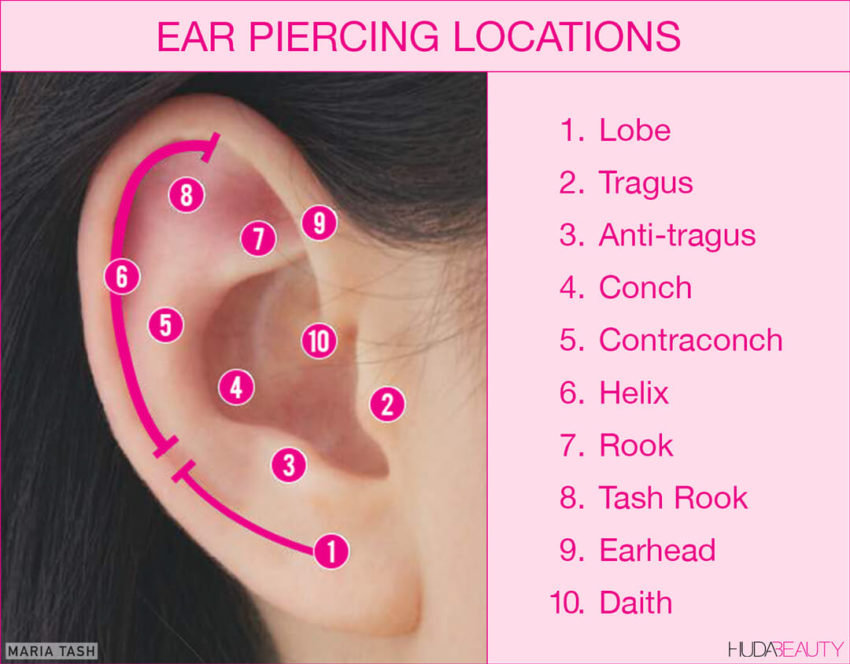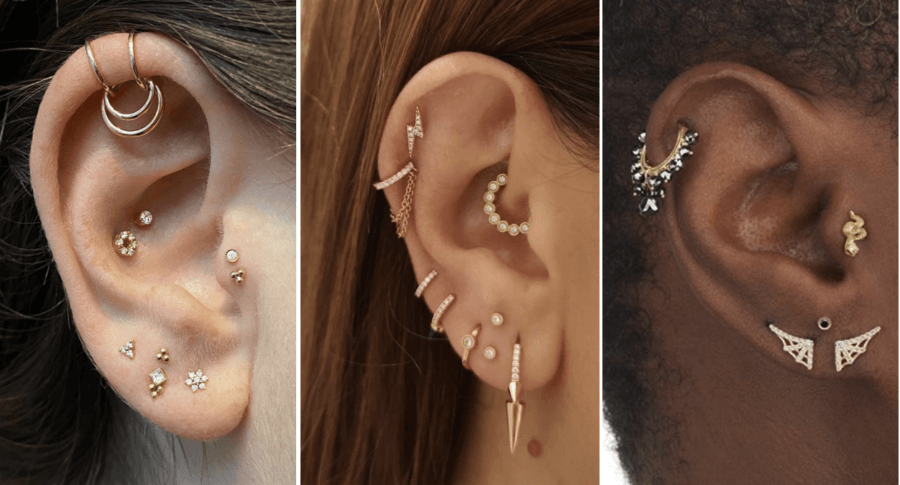How To Stack Your Piercings Like A Pro
View this post on Instagram
Without a doubt, the hottest jewelry trend right now is ear piercings. We don’t mean one or two, we’re talking fully stacked, beautifully curated ears dripping in diamonds, hoops, and all that sparkles. Literally, getting the perfectly stacked ear is a work of art, which is why the term #curatedear has amassed over 60 thousand tags on Instagram. If you’re thinking you need to join the party asap (literally we’ve spent hours deciding on our next piercings) then we’ve got ALL the info you need to start your ear curation journey.
 Source: Jon Kopaloff/Getty Images
Source: Jon Kopaloff/Getty Images
We spoke to the Queen of the piercing world, Maria Tash, aka the woman celebs like Beyonce, Zoe Kravitz, Ashley Graham, Rihanna, Blake Lively, and half of Hollywood turn to when it comes to stacking up their ears. Maria has been piercing and designing fine jewelry since 1993, and now has her own Maria Tash piercing and jewelry boutiques all over the world; her expertise on the perfectly curated ear is second to none. Naturally, we had to get her tips and tricks, and she talked us through EVERYTHING you need to know about ear stacking.
If you’re new to piercings, check out Maria’s tips for 10 things you need to know before you get your next piercing.
How to Get the Perfectly Curated Ear

A well-curated ear can be a mix of lobe and cartilage piercings.
How to Mix Different Earring Styles
“The trick for asymmetric styling is to balance three forces: the skin tone, the wearer’s personal aesthetic, and the weight and style of the jewelry that live next to each other. Each piece of jewelry should look balanced within the anatomy in which it lives, and be in balance with the pieces they live next to,” Maria says. So, depending on your unique ear shape you might find that certain jewelry styles look better in different places or that your unique ear anatomy is too small for certain piercings. For example, some people have a tragus or daith that is too small to be pierced.
View this post on Instagram
According to Maria, the right and left ear assemblies don’t need to match, although she says, “They should be related, but the pieces do not have to be purchased in pairs and hence worn identically on both sides. The most common way to mix earrings is to go up the lobe with rings of gradually smaller diameters, or studs that get smaller as you go up the ear. You can, of course, eschew that scheme and go from small to large instead.”
View this post on Instagram
If you prefer to do things a little differently, Maria says, “I like to accent parts of the ear where people have not seen studs or rings, and then add by framing these pieces. For example, on a day to day basis, I do not wear jewelry in my first lobes, and rather accent my upper cartilage. I wear large pieces up there daily, and the rest of the jewelry I wear in other piercings draws the eye up to these larger, upper-ear pieces.”
Should Your Ear Curation Have a Theme?
 Source: Maria Tash
Source: Maria Tash
“I think the pieces should relate to each other first, and if they tell a story that’s even better, but not necessary. For example, if you have a ring with bezel-set stones, then adding another piece nearby, with a matching setting around the stone, relates the pieces and creates consistency. An example of a theme plus the above would be relating a prong-set lightning bolt to a prong-set star in different planes of skin. In that example, there is both a celestial theme, matching settings, and then the choice of matching colors of metal or not,” Maria explains.

Can You Mix Different Metal Colors in One Ear?
 Source: Maria Tash
Source: Maria Tash
“Yes, but it needs to be done carefully and not overdone. I think the choice of metal color should first be about what color best compliments the skin tone. This is determined by holding up the metal to the skin, as one would a shirt color, and seeing which color best flatters the wearer. Most people can effectively wear more than one color, and there may be different areas of the ear that are redder than others. Any red undertones are best offset by white or yellow gold jewelry,” Maria tells us.
We love it when the metal colors match, but as you can see with the padlock ear stack example above, when it’s done purposely, it adds a really unique element that elevates the earring curation.
How to Mix Studs and Hoops
View this post on Instagram
“Studs are a nice way to accent rings, or to show a theme that goes from large to small, or highlight different areas of the ear that cannot house a ring,” Maria says.

“A modern way of accenting an ear piercing is to pierce directly above a traditional first, second, or third lobe piercing with a high-stacked lobe placed directly above the original piercing. It calls attention to the original piercing and makes the two look very deliberate,” Maria tells us. We love how this technique can be used to balance an old, miss-placed piercing.
As the earlobe is a quick-healing piercing, Maria suggests starting a stack on the first lobe placement, or unexpectedly above a third or fourth lobe placement. “Many people have first or second lobe piercings that look low or have stretched down. Putting a high lobe piercing directly parallel on top of these piercings makes the original piercing look better,” Maria says.
View this post on Instagram
Maria also explains that, “There are cases where we can insert two stacked lobes above an original piercing, with tiny diamonds, and this look is impressive. I always stress these looks need to be pierced in a way that cannot be simulated by one long piece of jewelry, so it looks different. When pierced truly parallel, the wearer can wear both rings or studs in the stack. The hoops, like orbiting Saturn rings, is an unexpected effect.”
View this post on Instagram
Maria’s Top Tips For a Perfectly Curated Ear
1. Select a piece that you love and layer a story around it.
2. Place custom-fit pieces to enhance your best features.
3. Find the metal color that best resonates with your skin tone.
If you’re thinking about starting your stack, we highly recommend thinking about your overall look and the type of jewelry you’ll want to wear regularly before you get started with your piercings. It’s also not recommended to have more than three piercings at a time, and if you’re piercing cartilage, we recommend doing one ear at a time as you won’t be able to sleep on that side for at least a week. Check out our full guide to everything you need to know before you get your next piercing here.
 Source: Shutterstock
Source: Shutterstock
Another trick is to take a picture of your ear, print it out, and sketch out possible options before you go for it!
What piercings are you thinking about getting next? Let us know in the comments below.




















Leave a comment